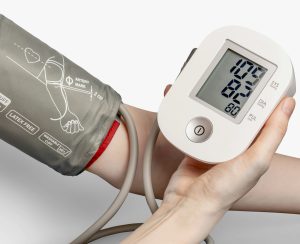
Do health conditions really benefit from exercise? The short answer is yes in most cases. In this blog post we take a brief look at five common conditions. A description of each and the basic benefits of physical activity. These health conditions are also conditions covered at Graham Fit.
Physical activity plays role in properly managing health issues and improving these conditions. There are also strong preventative properties for some health conditions from happening in the first place. It cannot be forgotten that physical activity provides the “antidote” to many ailments such as fat loss, regulating blood pressure and increasing lung capacity.
Asthma
Asthma is a long known health condition that affects the bronchioles of the lungs. It is mostly associated from childhood although adults CAN develop asthma from irritants in the workplace (a point to note in relation to COPD), or after a viral infection. This is known as occupational asthma. Those who suffer with asthma often refer to its symptoms like breathing through a straw.
Wheezing, coughing, breathlessness and tightness in the chest are all common signs and symptoms. Attacks can be triggered by smoking, dust mites, stress animals and chemicals.
The benefits of exercise are…
Improved respiratory fitness. Improved cardiovascular fitness. Preventing further respiratory disease. Improved expiration and more efficient breathing patterns. (A point to note is that anyone having difficulty coping with exercise may not have their asthma under adequate control).
Osteoporosis
Osteoporosis is a common bone disease that simply means “porous bone” or brittle bone disease. Although dietary and physical activity has been shown to slow down the disease, within industrialised countries older people often have a level of reduced bone mass. The loss of calcium and bone density can lead to a fracture through a slight impact. Common sites for fractures are the spine, the wrists and the hips.
The benefits of exercise for osteoporosis are…
To maintain bone density and maintaining functional movement. There is also the benefits of reducing the risk of fractures. In the hips for example this can be by as much as fifty percent.
Hypertension
Hypertension, also known as high blood pressure is known as a silent disease. This means a health condition without any symptoms in most cases. It is possible to have high blood pressure for years without even knowing it. Silent disease is an apt term as during those years the condition is causing damage to organs and tissues.
Blood pressure is the pressure of blood in the arteries. As the heart pumps blood via the arteries to those organs and tissues the pressure needs to be effective. If the pressure is too high then this is when damage occurs.
The benefits of exercise are to normalise blood pressure, as well as to increase the blood flow into the muscles. Weight management is also a benefit including reducing the risk of coronary heart disease.
Obesity
This is a condition with an excess amount of body fat. This is a serious health condition that affects the health of an individual in many ways. Obesity can be a very complex health condition and rarely as simple as saying “just eat less”. There are lots of reasons and possible complications why a person may become obese. This can include hormonal reasons as well as psychological reasons.
Obesity is surprisingly still measured today using the body mass index or BMI. This is a “crude” but simple method of measurement. The benefits of exercise will typically go hand in hand with dietary improvement and behavioural changes. The aim is to reduce weight, therefore improving weight management. Other positive contributors are reducing the risk of coronary heart disease and strengthening joints.
Diabetes mellitus
Diabetes is a chronic metabolic disease caused by an increased resistance to or the lack of production of the hormone insulin. Insulin controls the level of blood glucose in the body. The two most common types of diabetes are type one and type two. Type one was previously known as insulin dependant diabetes or IDDM. This condition is caused by the absence of insulin production by the pancreas. The situation then is abnormally high bloods sugar levels due to the lack of insulin. This is because the cells that produce insulin are destroyed.
Type two was previously known as non-insulin dependant diabetes or NIDDM. This condition is commonly lifestyle related and can carry additional serious health implications such as obesity or overweight. With this condition there are abnormally high blood sugar levels due to insufficient insulin or reduced insulin sensitivity.
The benefits of exercise for diabetes include improved blood sugar control by improving insulin sensitivity. Further benefits are to reduce blood pressure and reducing stye risk of coronary heart disease (CHD).
In conclusion
This blog post is a basic look at some of the health conditions and exercise benefits for each. Ultimately programmed physical activity must be appropriate to the person with a condition. There are often multiple conditions affecting a person with a knock on effect to or from other conditions. There can also be medication implications and a whole host of reasons for a health condition occurring.
